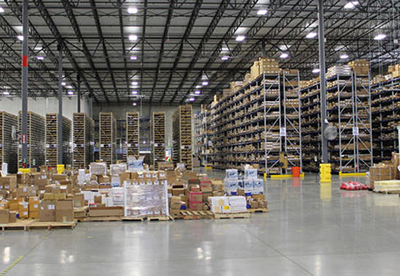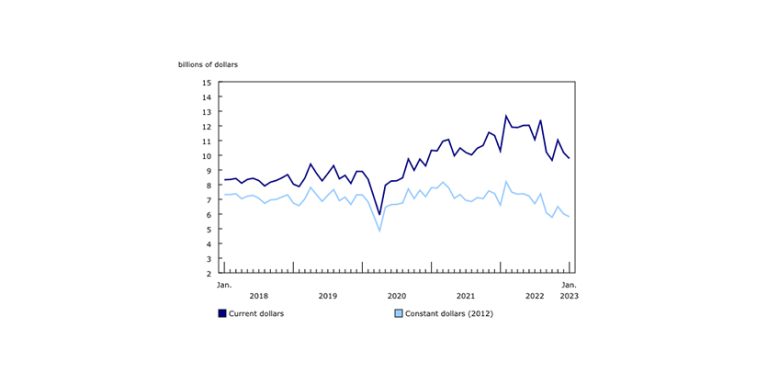How Distribution Is Seizing Control of Its Destiny

Tyson Leal
When a supply chain snaps, distribution is always the group that pays the price. Though distribution personnel have little control over the events that cause supply disruptions, they bear the burden and responsibility of attempting to manage the situation. They’re caught in a never-ending tug-of-war, constantly working to balance the mercurial forces of supply and demand in an effort to minimize business disruptions and customer dissatisfaction levels.
At the root of this struggle? Distribution is always, always, suffering from a lack of information. They’re constantly reacting to supply chain disruptions, lacking the foreknowledge that would support proactive rather than reactive management. Yet, although today’s norm, this reactive approach is rapidly turning into yesterday’s news with emerging technologies and analytics that are forecasting global supply chain volatility and paving the way for advanced ‘’live” and “predictive” supply chains.
Supply chains are fragile things
Modern supply chains are quite vulnerable to disruption and unforeseen consequences.
According to a survey conducted a few years ago by the Business Continuity Institute, 85% of companies reported experiencing a minimum of one supply chain disruption in the previous 12-month period. Three-fourths of the companies noted that lean practices such as just-in-time inventory management made them even more vulnerable to supply chain disruptions. And half of the companies were significantly damaged by the disruptions experienced during the survey period.
Knowledge is the key to minimizing the impact of disruptions; knowledge of what is happening, and knowledge of what might happen. If you were running an inbound facility that distributes product, for example, you’d want to know where your product is located in the supply pipeline at all times, and when exactly it will arrive.
But most companies don’t have that precise ETA knowledge. Most companies, in fact, are relying upon guesswork instead and experience influenced by gut feelings. Not surprisingly, the success rate of the ETA manage-by-guesswork technique is unimpressive — about 60%, essentially the equivalent of managing a business by the flip of a coin.
Clearly there is much room for improvement.
ETAs are a joke… but nobody’s laughing
Everybody has ETAs, of course. So everybody knows when their product is estimated to emerge from the pipeline.
But on an international scale, ETAs are abysmally inaccurate. The global metric for ocean-shipping ETAs is a standard deviation of 4.78 days. So the ETAs for your product currently en route across the ocean will be inaccurate by an average of nearly a third of the total shipping time.
Why are ETAs so inaccurate?
It’s partly because of the archaic notification system that drives the process of calculating ETAs. Industry wide, user notifications usually average 24 to 48 hours post event. When a severe weather event occurs, or a fire consumes a factory, or a terrorist event prompts transit shutdowns — when any of countless hourly events occur that could impact an ETA — notification of the disruption can take up to 2 days to be disseminated from the supplier or freight forwarder to the shipper (which is a lifetime in a world of Twitter and 24 hour news cycles).
So if something happens on a Monday, you find out about it on Wednesday. So how do you react appropriately to 2-day-old information? And, why should you have to when emerging real-time information subscriptions exist?
“Reliable data” does not have to be a myth
Visionary retailers and manufacturers have identified a new way to source the intelligence they need about their supply chains and factors affecting them to further increase operational efficiency, velocity and transparency to internal and external clients.
For example, a Fortune 500 retailer recently incorporated new live data sources and predictive analytics into its existing supply chain system interface. The result was a 50% increase in global visibility, with an average 70% improvement in ETA accuracy. Another Fortune 500 manufacturer also recently utilized this live and predictive information to increase the velocity of its data supply chain and removed three days in their purchase order to final client delivery lifecycle.
These companies no longer rely upon guesswork in managing their distribution operations. Guesswork has been replaced by transparency-enabled certainty in their upstream workflows.
Even more importantly, these progressive companies are seeing future revenue forecasts increase as a result of the supply side improvement. Interestingly, what was determined through each of their business case evaluations was that customer satisfaction may be the most important benefit offered by incorporating live data and predictive analytics technology to their portfolios. That’s because customer satisfaction levels maintained above a 95 percent average equates to a 6 percent increase in future sales revenue. Levels that drop below 95% equate to a 6% drop — a potential 12% swing. Increasing transparency into the supply chain process and improving accuracy, certainty and velocity of information improved their service to such a level their customers now see their vendor(s) as strategic partners — bolstering orders and future revenues.
Transparency and live data
Supply chain pipelines do not need to be veiled in mystery. But, that’s the way it is for most companies. It’s as if product goes into one end, disappears from view, and emerges to be magically delivered on the other side. What industry leaders realize is that there is a way to actually monitor the events in these “black holes” that does not require support from freight forwarders, carriers or other suppliers in the chain, agnostic of their operating systems. The answer is the incorporation of live data and predictive analytics that manage elements of the supply chain not previously thought possible.
Revealing this next level of transparency, in effect, is what TransVoyant has accomplished with its Continuous Decision Intelligence (CDI) technology. CDI streams, monitors, correlates and alerts on hundreds of live data streams, delivering up-to-the-second situational awareness to distribution operations. Just as importantly, CDI combines live data streams with historical data and unique algorithms to perform predictive analysis and provide Precise ETAs at certainty levels well above 90%.
Put simply, live and predictive analytics provide distribution management with the ability to know where product is located in the supply line at all times, and more accurately predict where product will be at any given time. For the first time in supply chain history, a technology exists that applies deep math and real-time event-based analytics against structured and unstructured data points that deliver not only answers to difficult questions, but also has the capability of automating the decision process — adding further velocity and efficiency — and turning distribution scapegoats into predictive superheroes.
Tyson Leal is Director of Industry Solutions for TransVoyant. He has more than 10 years of experience in helping supply chain and logistics executives design and deploy predictive technology solutions. His unique results-oriented approach to client engagement has helped hundreds of companies and partners identify and implement solutions that solve key supply chain challenges and deliver compelling financial returns on investment.
This article has been reprinted with permission from Industrial Distribution.











